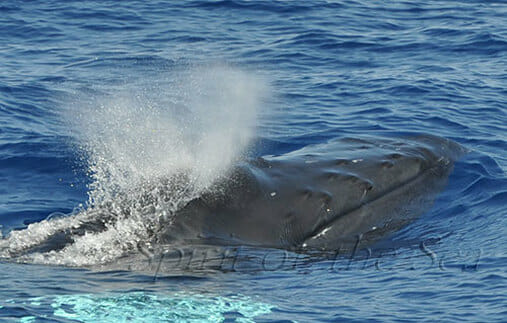Humpback or humpback whale (Balaenoptera novaeangliae)
It is a mysticete cetacean, which means that it has no teeth but baleen teeth and feeds on plankton and small fish. One of its most striking feeding techniques consists of creating a net of bubbles in which fish are trapped.
They are present in all oceans and migrate from the cold waters of the polar zones to warmer areas for reproduction.
Probably one of the most recognisable whales for its spectacular jumps and songs during mating season.
Depending on the sources consulted, the average size varies between 11 and 15 metres, with the female being larger than the male. Calves are about 4 metres long at birth after a gestation period of 11 months.
This species owes its name to the bulge on the front of the dorsal fin. Its pectoral fins can reach up to 5 metres and are white on the inner side. When submerged, the caudal fin shows a characteristic colouring of each individual, which is used, together with the notches on the fin, for identification.
In our navigation area we find them from autumn to spring, usually in small groups, with juveniles and in shallow areas.
This species was heavily hunted for years until it wiped out about 90 % of the world's population. Although the ban on hunting has brought about a partial recovery of the species, it is still exposed to many dangers, almost all of which are man-made.


